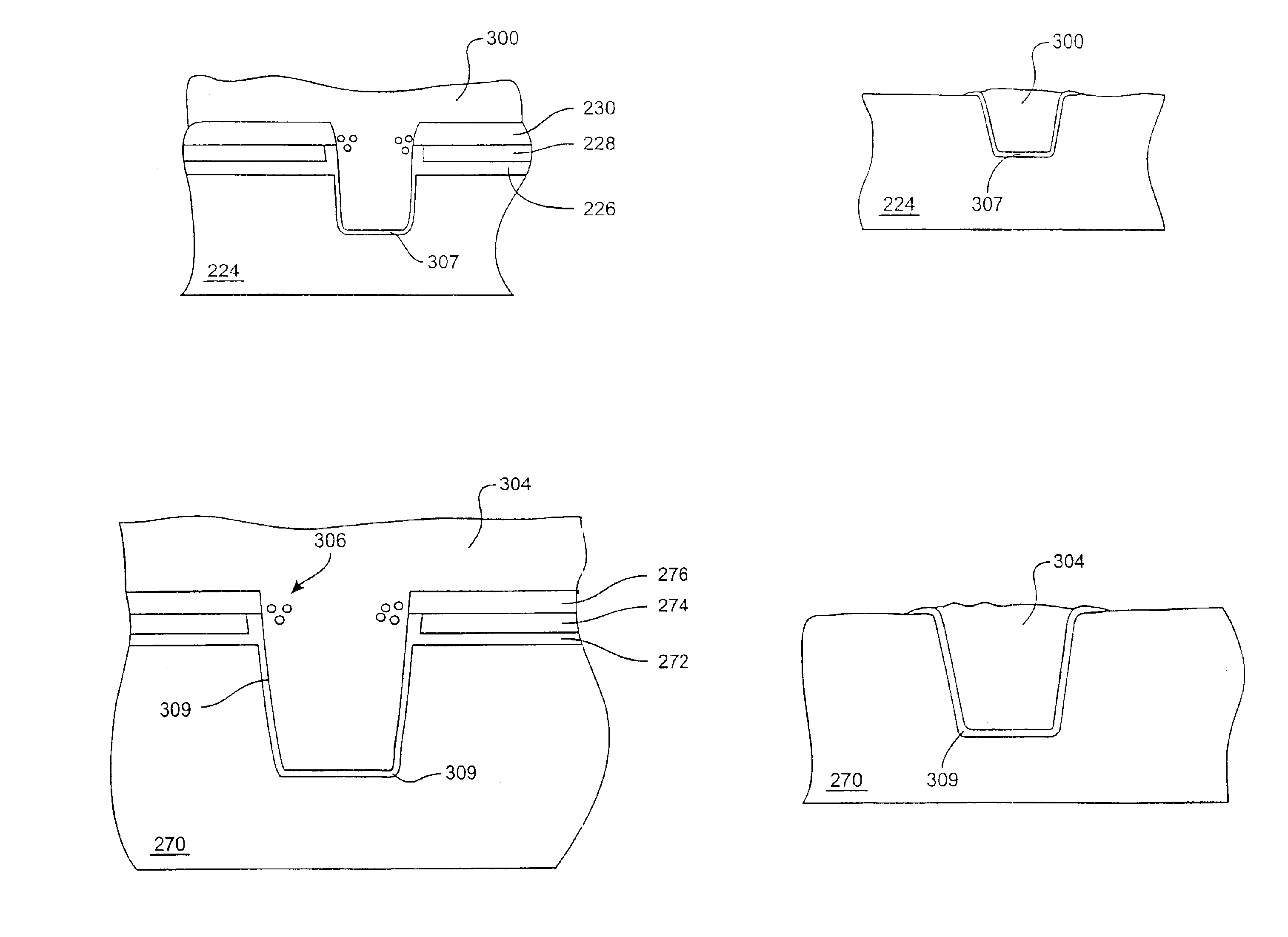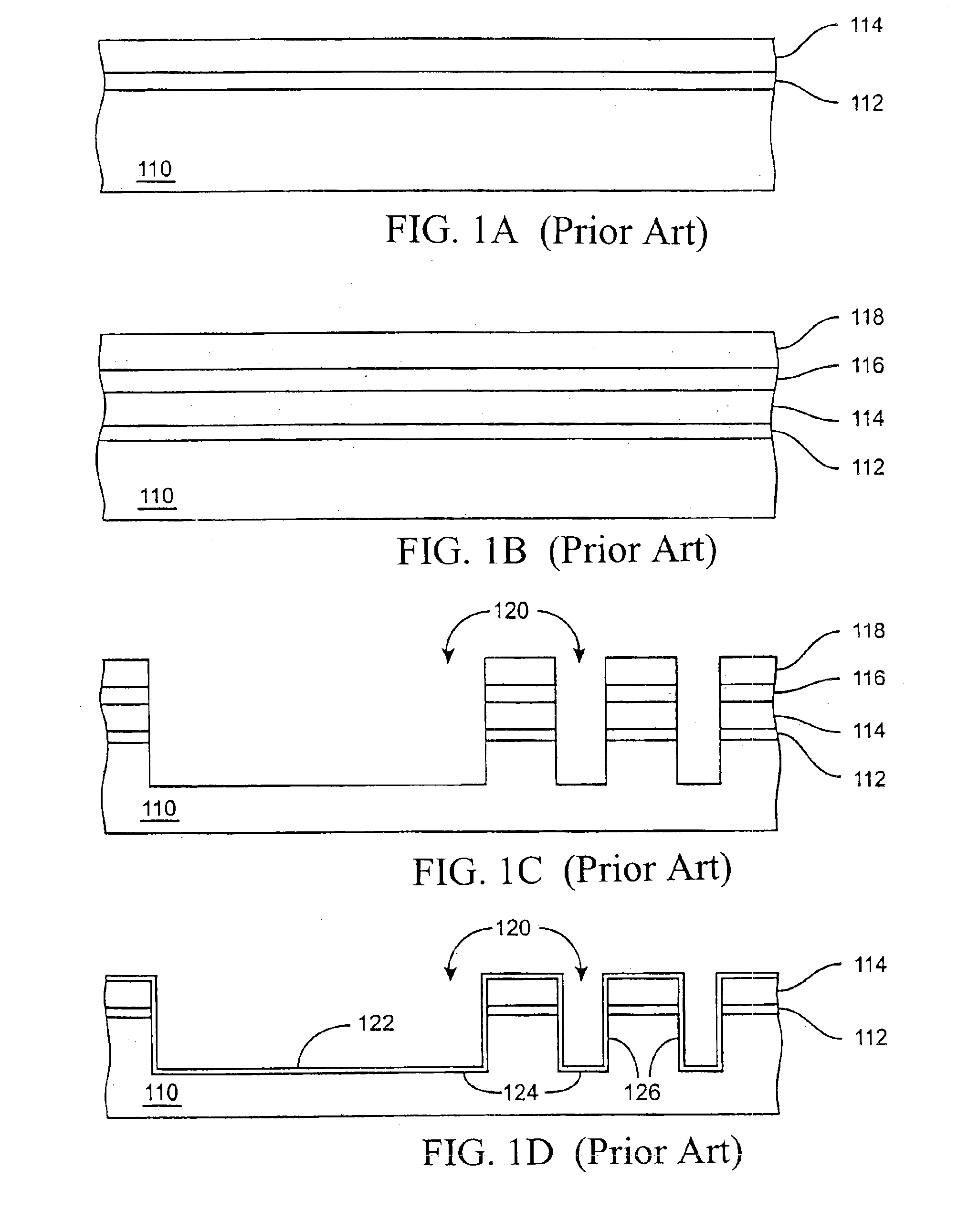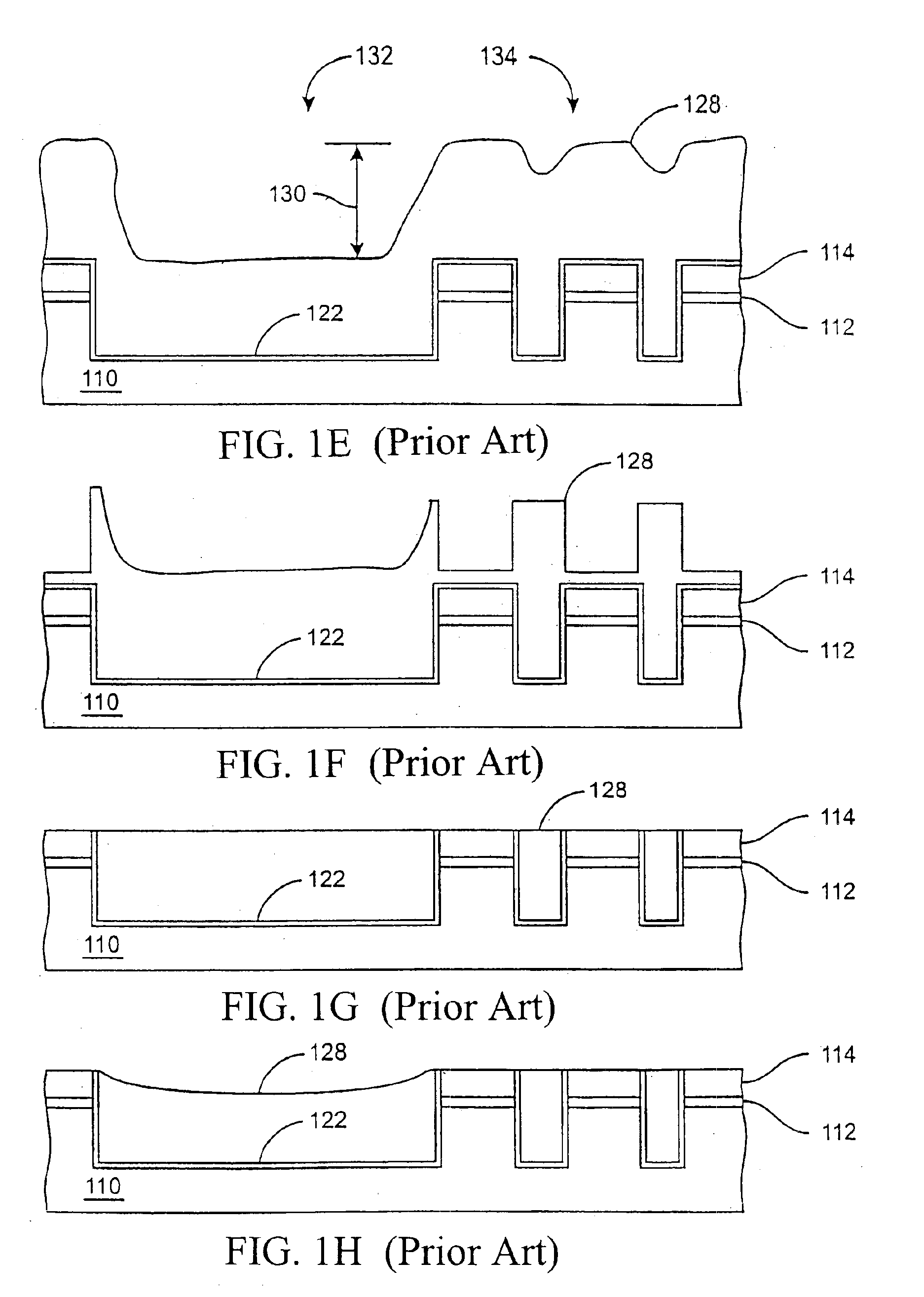Integration scheme using self-planarized dielectric layer for shallow trench isolation (STI)
a dielectric layer and self-planarized technology, applied in the field of integrated circuit fabrication, can solve the problems of increasing the thickness of the trench, increasing the cost and complexity of the installation, and requiring expensive equipment, so as to the electrical characteristics of the device, and improve the quality of the trench fill layer
- Summary
- Abstract
- Description
- Claims
- Application Information
AI Technical Summary
Benefits of technology
Problems solved by technology
Method used
Image
Examples
Embodiment Construction
I. Self-Planarized Deposition of a Dielectric Layer in Shallow Trench Integration
Specific embodiments of the present invention are illustrated using an STI integration as an example. The benefits of the various embodiments of the invention can be readily seen by comparison with the prior art methods, such as illustrated in FIGS. 1A-1H. Specifically, the present invention provides more efficient shallow trench isolation integration by providing self-planarized deposition of a dielectric trench fill layer without sacrificing the quality of the dielectric layer. The present invention further provides dielectric trench fill layers which have undesirable porous regions removed by CMP. It is understood that the scope of the invention is not necessarily limited to STI integration.
A. Forming a Trench
FIGS. 3A and 3B illustrate alternate methods of forming a trench on a substrate, typically a silicon substrate. Referring to FIG. 3A, the first step 202 is to apply a pad oxide directly on the s...
PUM
| Property | Measurement | Unit |
|---|---|---|
| Temperature | aaaaa | aaaaa |
| Temperature | aaaaa | aaaaa |
| Temperature | aaaaa | aaaaa |
Abstract
Description
Claims
Application Information
 Login to View More
Login to View More - R&D
- Intellectual Property
- Life Sciences
- Materials
- Tech Scout
- Unparalleled Data Quality
- Higher Quality Content
- 60% Fewer Hallucinations
Browse by: Latest US Patents, China's latest patents, Technical Efficacy Thesaurus, Application Domain, Technology Topic, Popular Technical Reports.
© 2025 PatSnap. All rights reserved.Legal|Privacy policy|Modern Slavery Act Transparency Statement|Sitemap|About US| Contact US: help@patsnap.com



